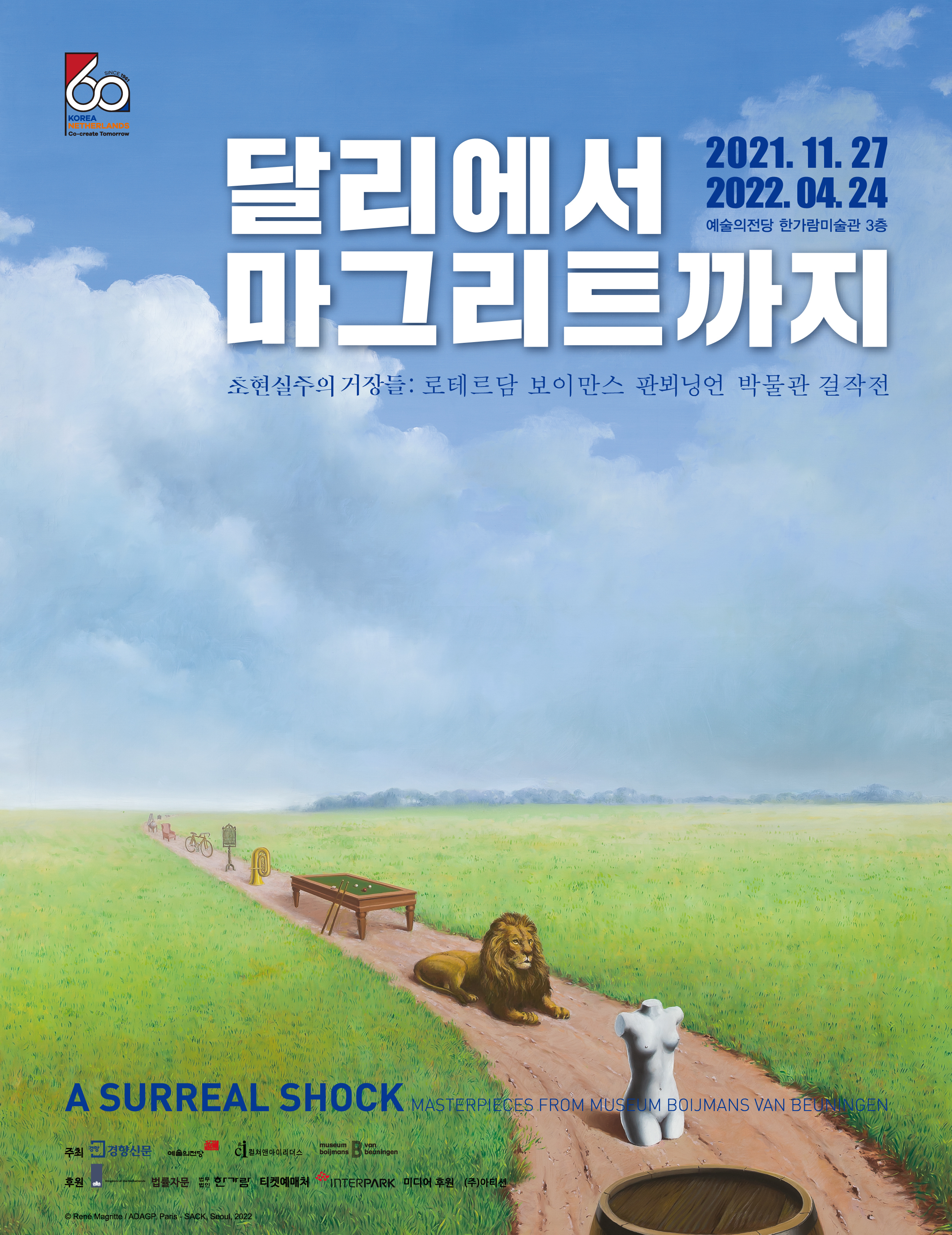
An exhibition being held at the Hangaram Art Museum at the Seoul Arts Center, titled A Surreal Shock: Masterpieces From Museum Boijmans Van Beuningen, has been extended to run until April 24. The title was also changed to include Dalí to Magritte, reflecting public interest in the pieces that are in the exhibition. Though surrealism is sometimes considered to be confined to the fine arts, it actually transcends the fine art world and is a major art trend seen in literature, film and beyond. We therefore view surrealism not as something fantastical but as the fruits of another unique artistic approach to the world we live in.
The Museum Boijmans Van Beuningen, the Dutch home to the permanent collection that at all other times houses the works currently on display at the exhibit in Seoul, holds the distinction of being Europe’s largest collection of surrealist works. It is for that reason that this touring exhibition affords visitors the opportunity to experience the vast world of surrealism, including 180 original works by surrealist masters like Salvador Dalí, René Magritte, Joan Miró and Man Ray, in person and all in one place.
The exhibition piques visitors’ interest right from the start with a foreshadow of the awe-inspiring number of works within. The backdrop of the exhibition hall provides a flood of stimulation for the eyes and the space is laid out such that guessing what comes around each corner is nearly impossible, making it like the personal thoughts of the surrealist artists are spread out in front of viewers for them to see directly. The surrealistic works installed throughout the exhibition hall add to the illusion of being in a place not of this world and increases the feeling of immersion.
The first section opens with the Surrealist Manifesto, published by French poet André Breton in 1924 and considered to be the true beginning of surrealist art. Works from Dalí and Magritte can be seen in the same space, reminding viewers of their personal references for surrealism. The second section shows works that demonstrate surrealism’s relationship with Dada. Dadaists like Marcel Duchamp came to doubt human rationality after World War I and used objets d’art, theater, music, poetry and more that eluded typical ideas of logic to dismantle traditional notions of beauty and reason. This innovative process is considered to have been a forerunner of surrealism, so it must be seen in order to understand the overall progression of the exhibit.
The third section (Dreaming Mind) and the fourth (Chance and the Irrational) present the artistic outcome of what happens when the world is absorbed through dreams and the unconsciousness—two important approaches to work for the surrealists. The artists used dreams as a tool to harness the power of untamed thoughts. A pioneer in the field, the images Dalí depicts based on his paranoid thoughts point viewers to the world of hallucinations realized on the canvas. In addition, automatism, a way of using unconsciousness as a tool for and a subject of artwork, pursued the constant liberation of thought while seeking a pure state unbound by the artificiality of human rules.
Desire and Strangely Familiar, the fifth and sixth sections, focus on frequently recurring subjects of surrealist works. As the surrealists were interested in unrestrained unconsciousness, desires and chance unfettered by the rules inherent in human life were an important focal point in the world of their works. Their worlds meticulously reveal the true nature of humans and their outward illusion of placidity and add a dash of mystery to everyday life by depicting typical objects used in completely unrelated ways, perfectly demonstrating the spirit of the Surrealist Manifesto.
One quotation—“the marvelous is always beautiful, anything marvelous is beautiful, in fact only the marvelous is beautiful”—continues to ruffle our lives, even today, and leads us to reconsider all the things in the world we take for granted. Just as surrealism had a great influence on the course of modern art, the personal outlooks and imaginations of the surrealists featured in this exhibition bring visitors one step closer to inspiration and the fountain of creation that spouts human nature.
TRIVIA
Automatism
An important technique in surrealist art meaning unconscious, automatic action, it makes an intention-free record of the world of the unconscious. It allows for an expression of the world of the human subconscious without falling back on conventional techniques, biases or interference from control, and creates beauty and meaning free of intention.
Unauthorized reproduction and distribution prohibited.


- [NoW] Alice Dalton Brown2021.09.24


- [NoW] Thoughts on people today2021.11.19




